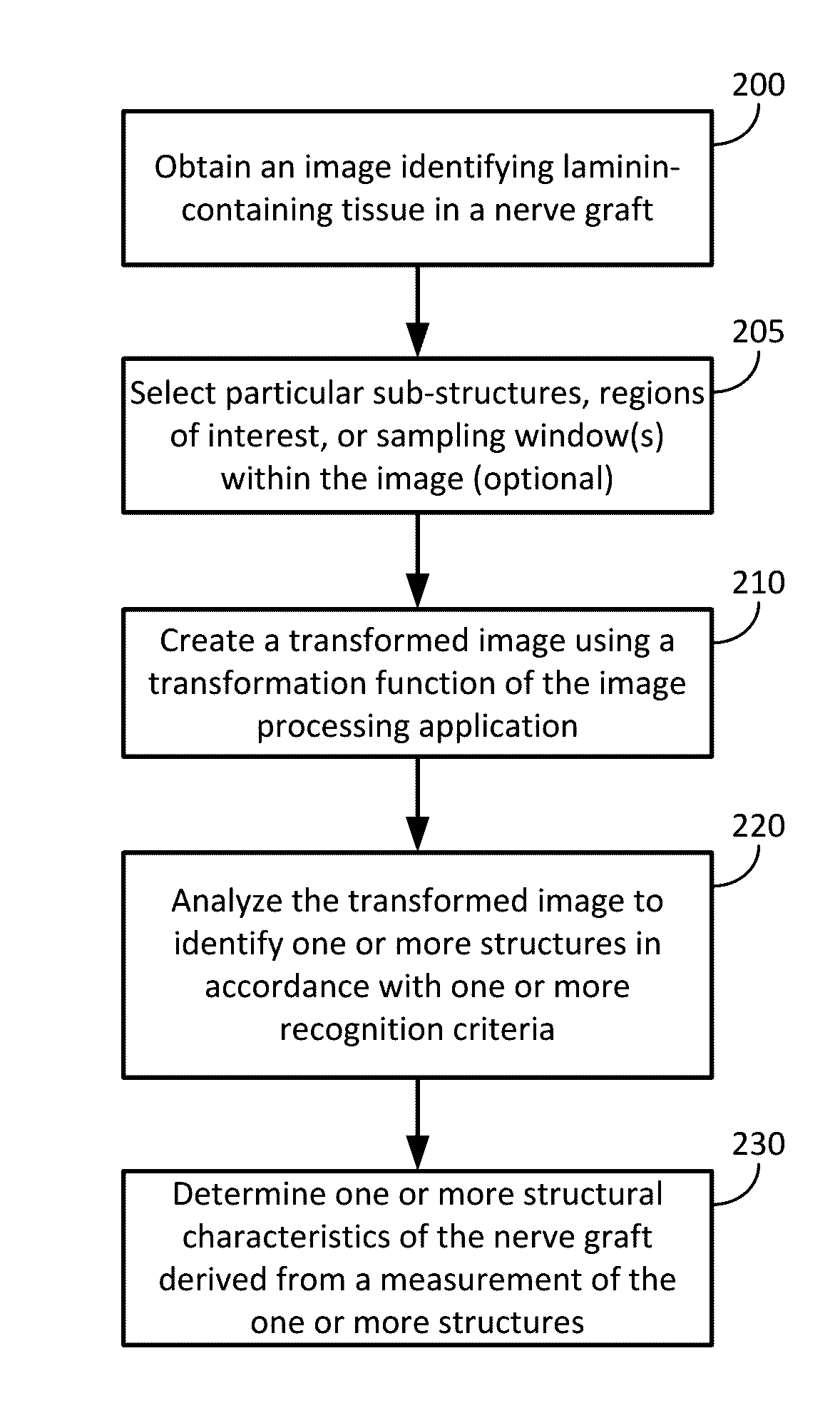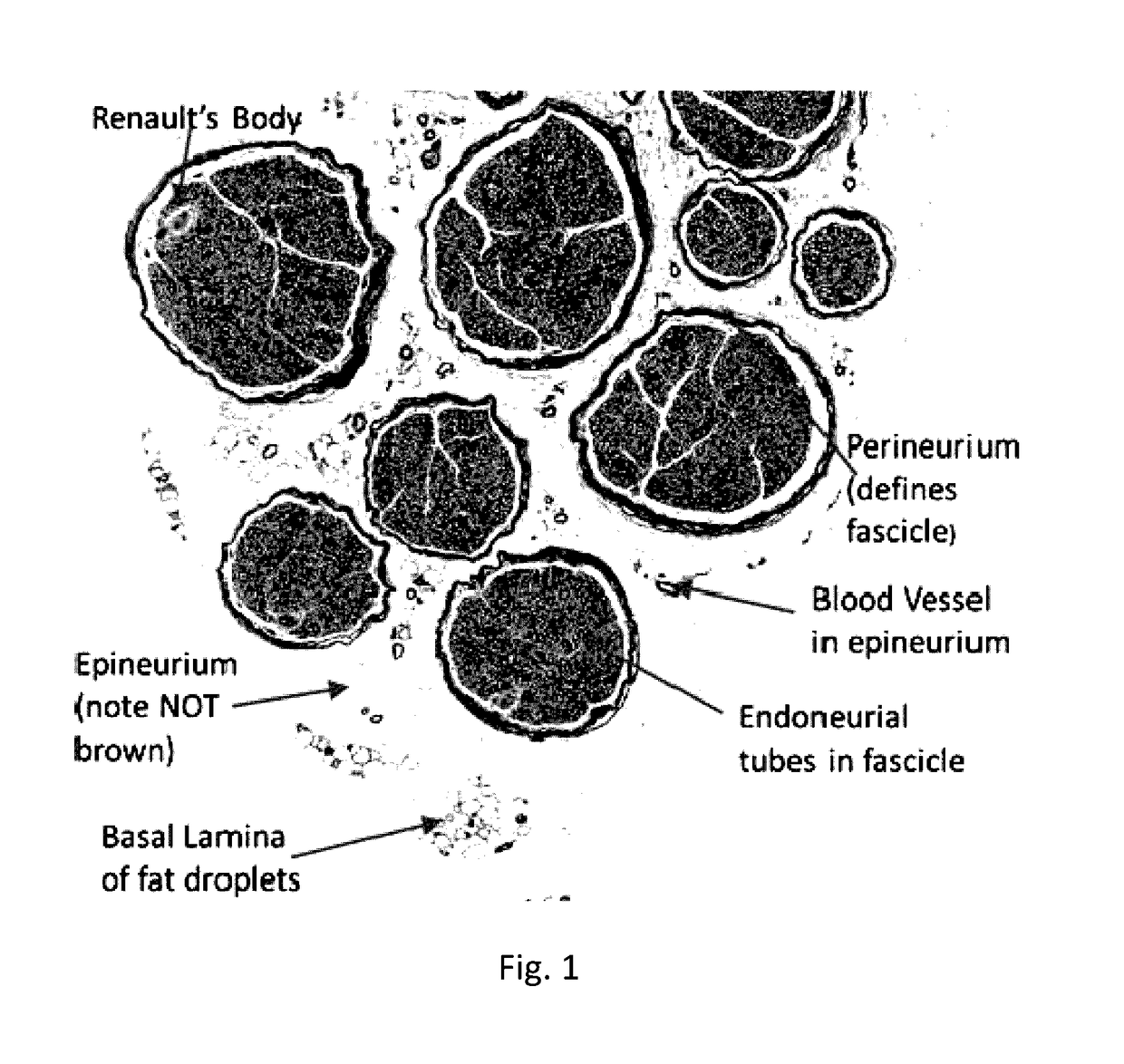Quantitative structural assay of a nerve graft
a quantitative structural and nerve graft technology, applied in image analysis, image enhancement, instruments, etc., can solve the problems of often damaged or severed peripheral nerves
- Summary
- Abstract
- Description
- Claims
- Application Information
AI Technical Summary
Benefits of technology
Problems solved by technology
Method used
Image
Examples
example 1
[0058]An embodiment of the invention was constructed to experimentally derive certain ranges and parameters. As noted in the described method flow, images of samples containing a cross-section of a nerve graft were obtained. Experimental conditions included alternative options for several parameters, which were then compared for closeness of fit to a qualitative histology score determined from the same sample images.
[0059]The laminin histology images of eleven (11) nerve graft lots comprising Avance® nerve grafts from AxoGen, Inc. were assessed. The lots included 33 large diameter (3-5 mm) and 33 small diameter (1-3 mm) samples. Images were derived from slides scanned into ImageScope from Aperio. In this case, the images were examined by an operator for the quality of the anti-laminin staining.
[0060]In this example embodiment, the fascicles were selected using an image processing application. Here, the image processing application is Fiji (also known as ImageJ). The fascicles were s...
example 2
[0076]An embodiment of the invention was developed to experimentally assess the closeness of fit of certain described techniques to the qualitative historical histology score determined from the same sample images. To summarize, Example 2 used specific ranges for the size and circularity recognition conditions, and assisted selection, and compared three structural characteristics against a historical qualitative score for goodness of fit.
[0077]As noted in the described method flow, an image of a sample containing a cross-section of a nerve graft was obtained. In Example 2, thirty-two lots of Avance® Nerve Graft from AxoGen, Inc. were assessed; the lots included four lots that did not pass the qualitative historical histology structural acceptance criteria. Result analysis examined the correlation between historical scoring data and three quantifiable structural characteristics. The data was assessed by comparing the historical score for a given sample (e.g., from a single graft, als...
PUM
 Login to View More
Login to View More Abstract
Description
Claims
Application Information
 Login to View More
Login to View More - R&D
- Intellectual Property
- Life Sciences
- Materials
- Tech Scout
- Unparalleled Data Quality
- Higher Quality Content
- 60% Fewer Hallucinations
Browse by: Latest US Patents, China's latest patents, Technical Efficacy Thesaurus, Application Domain, Technology Topic, Popular Technical Reports.
© 2025 PatSnap. All rights reserved.Legal|Privacy policy|Modern Slavery Act Transparency Statement|Sitemap|About US| Contact US: help@patsnap.com



